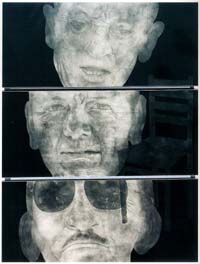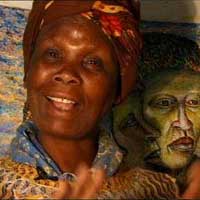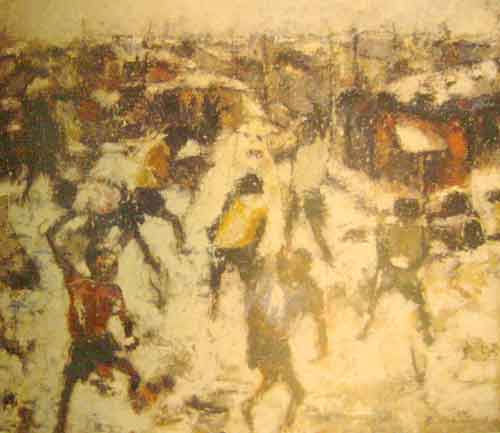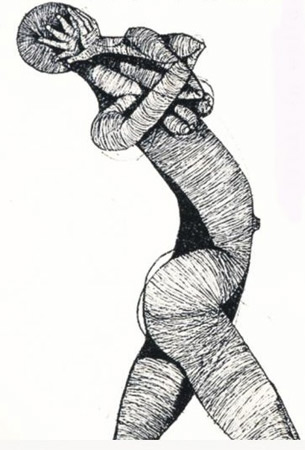Resistance art
It is an artistic movement born in the second half of the 80s, the most violent and repressive period of apartheid government .
•For that reason the hour before sunrise is a common imagine to indicate the hopeful waiting of freedom.
•The apartheid oppositor have the aim to communicate in every form of expression their desagreement: freedom calls and incitations spread out on the t-shirts, walls, pamphlets, flags and all the artistic community is involved in this process of propaganda.
•In 1979 the
three Stopforth portraits “the interrogators” (on the right) appear, as a
representation of the trhee policemen responsible for the death of Steve
Biko.

•This artist, who worked from the late 70s until the early 80s often drew painting about the terrible turtures inflicted to the prisonners.
• The
interpretation of apartheid of Mmakgabo Helen Sebidi (images) is a violent clash
as in civilisation, as in southafricans families that are now fighting
to get and defend their stolen land.
The
interpretation of apartheid of Mmakgabo Helen Sebidi (images) is a violent clash
as in civilisation, as in southafricans families that are now fighting
to get and defend their stolen land.
•Jane Alexander represent a sick society through her sculpture (the butcher boy, 1985 Soth African National Gallery).
• PEACE
PARKS
PEACE
PARKS
•This innovative movement involved Pretoria and Johannesburg areas.
•It is both a reaction of the oppression and a dignity rivendication from the black community.
•When in 1985 was firstly declared the state of emergency, common services granted by the administration to the townships, as cleang of the streets, were interrupted.
•Soon corners became rubbish dumps, but the young community decided to react and transform that places in free green areas, with coloured walls, but also innovative sculputure realized with painted car wheels, logs and other materials.
•Soon authority decided to eliminate this little alternative parks, but the black creativity didn’t stop and after 1990, with Nelson Mandela liberation, it has possibility to freely express.

 After 1976 mass media became to interest to the suothafrincan situation
and helped young artists such as Robert
Siwangaza and his brother Hollow to spread their names. They wanted
to underline the townships aspect that most moves the human soul. Community Arts Project
in Salt River of Cape Town opened in 1977 and nowadays is still active.
After 1976 mass media became to interest to the suothafrincan situation
and helped young artists such as Robert
Siwangaza and his brother Hollow to spread their names. They wanted
to underline the townships aspect that most moves the human soul. Community Arts Project
in Salt River of Cape Town opened in 1977 and nowadays is still active.